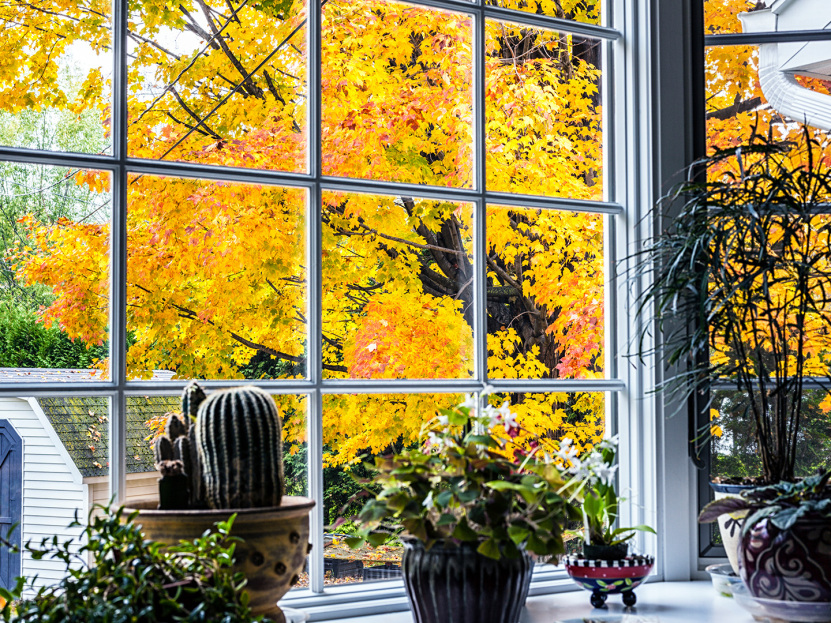
The wonderful season of fall is upon us – that means pretty fall colours, hot drinks, and cozy clothing, but this also means a seasonal drop in temperature.
If you live in a region where frost or freezing is bound to occur, it is best to bring any tropical or perennial patio plants inside once nighttime temperatures drop below 12°C (55°F). Temperatures lower than this can cause leaf drop and potentially can cause your plant to go into dormancy.
Follow this guide to help acclimate your plants back indoors during the fall season.
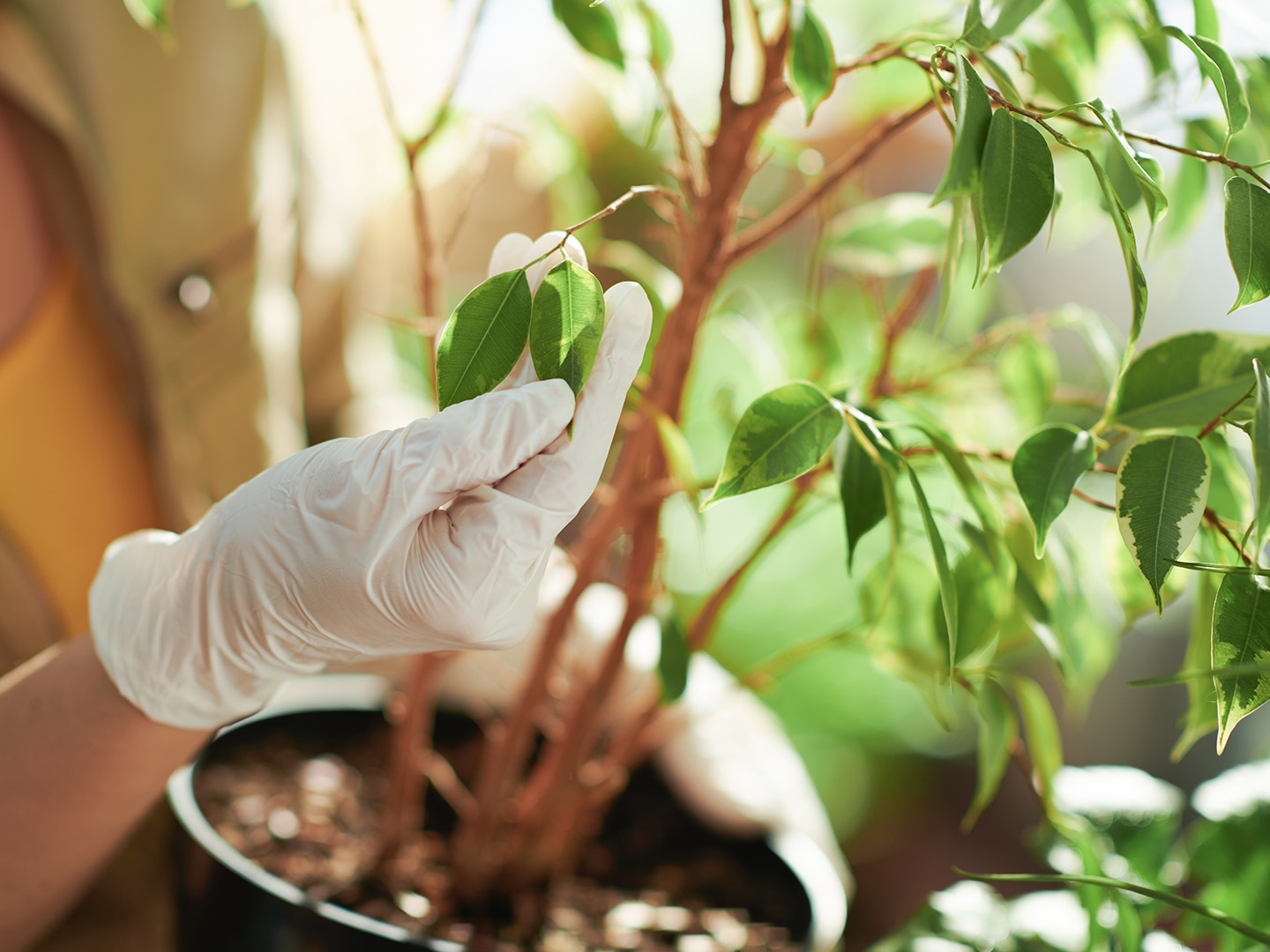
Clean and inspect
When bringing your houseplants indoors after them being outside during spring and summer it is good practice to inspect them before bringing them inside. This means checking its soil, leaves, roots and inspecting for any pests or damage to your plants.
When checking the soil: Use your finger, push down into the soil to see if it is moist. If it is moist to the touch – you generally do not need to add any more water. If it is dry to the touch, then proceed to give your plant some water.
If your plant does need watering during this time, a good tip would be to rinse off the leaves while watering, this can clean off any dust, particles and pests that may be stuck to your leaves. Ensure to dry off your plants leaves after rinsing.
With bare (or gloved if you prefer) hands, inspect the soil (at least an inch or two deep), the roots at the bottom of the pot, along the stem and under a plant’s leaves for any sign of pests, insects or mold. If you notice any pests or insects, check out our Beginner Houseplant care guide where we break down the different types of pests and bugs that could end up on your plant. Treat any pests or issues accordingly, and keep your plant quarantined away from your other houseplants until the issue(s) have been mitigated.
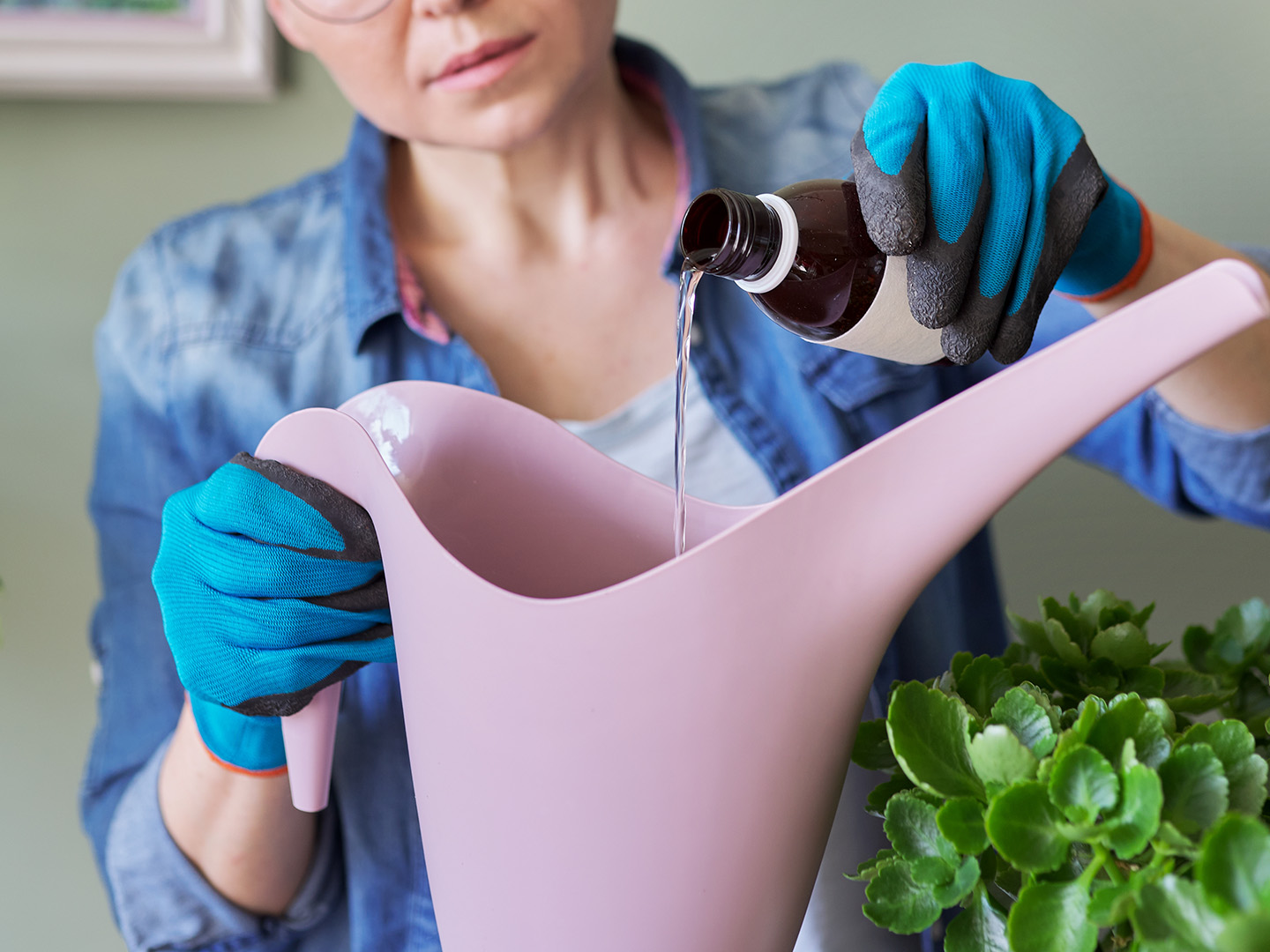
Fertilize
Depending on your location and climate you may not need to fertilize your plants before winter. If you live in a colder environment with shorter periods of daylight during the winter, then your plants may not need fertilization.
If you do bring your plants in at the end of summer as opposed to midway through fall, then it may be beneficial to give your plant one last boost of fertilizer in its growing season before the cold season starts.
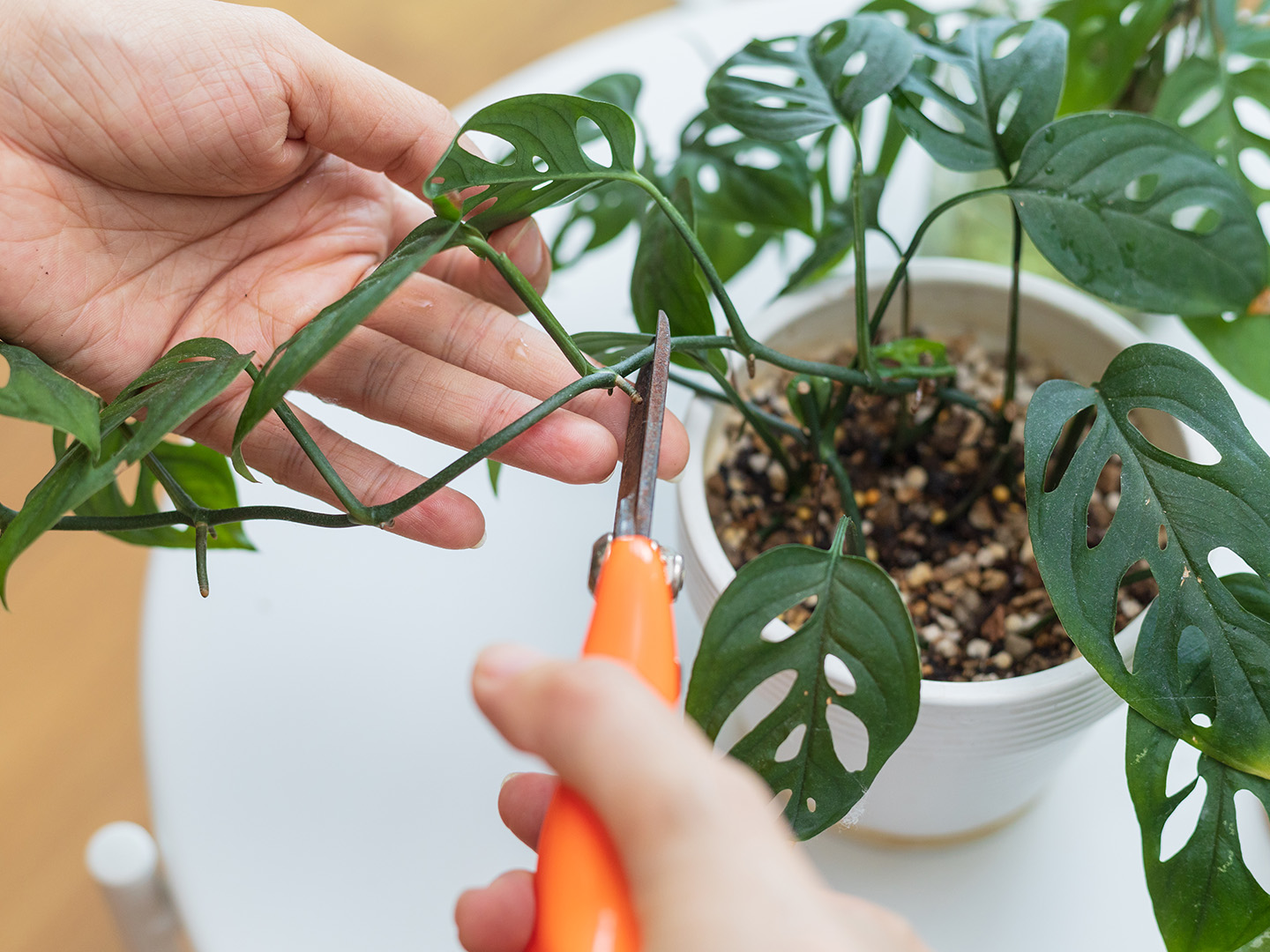
Trim
Another important aspect of bringing your plants inside and preparing your garden for fall is to trim off any excess or damaged leaves that are visible. Pruning can help remove any dead or damaged leaves, as well as remove leaves that have become infected with pests or bugs.
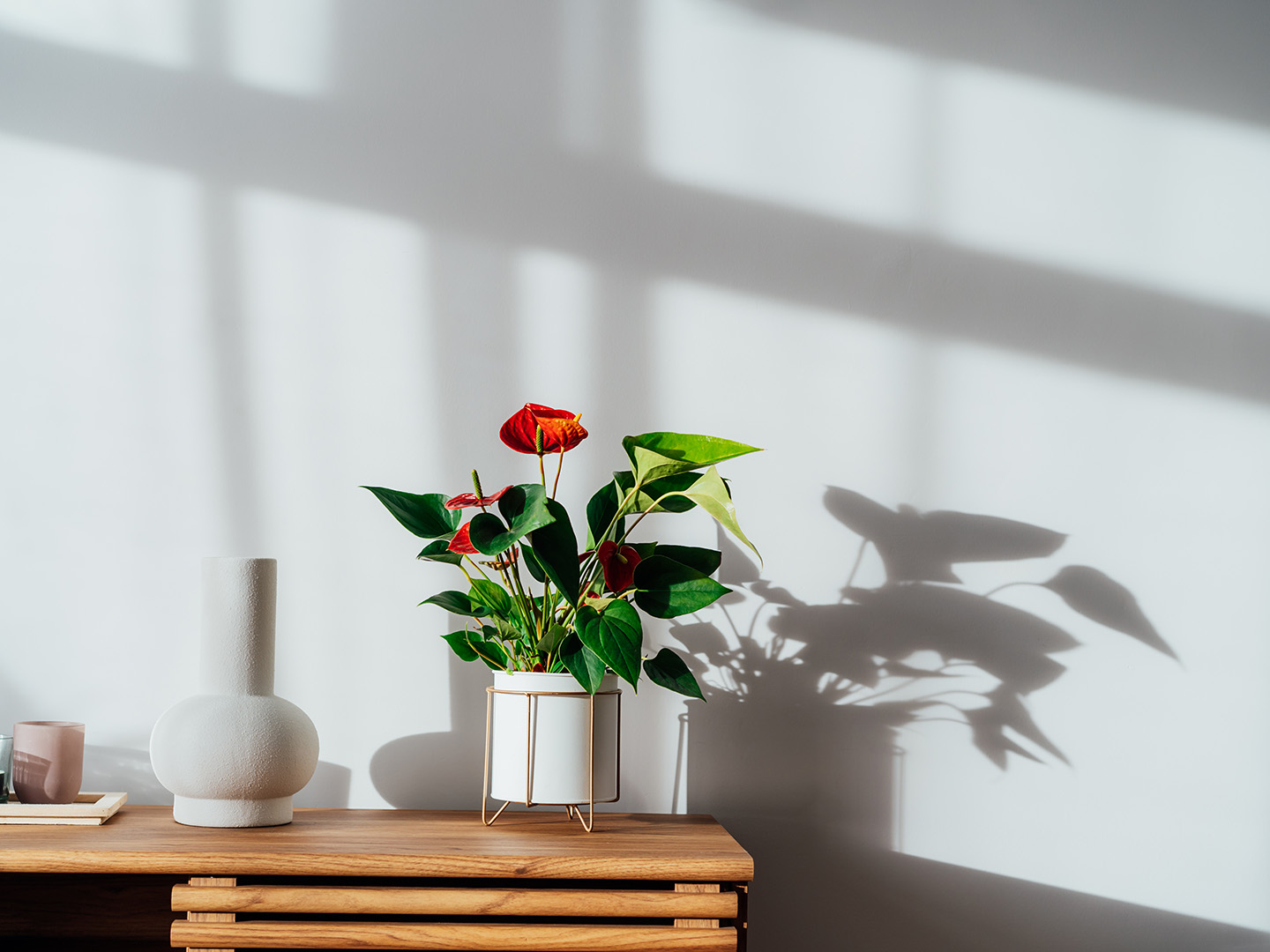
Lighting
As the days and sunlight begin to become shorter, finding a location for your plant can be key to its survival. Where you placed your plant in the spring or summer may not be the ideal location for it during the fall and winter season. Take a note of a location in your space that gets that bright in-direct light throughout the day. If you feel that your plant is not getting the light it needs during the winter months, you may consider adding a grow light into your space.
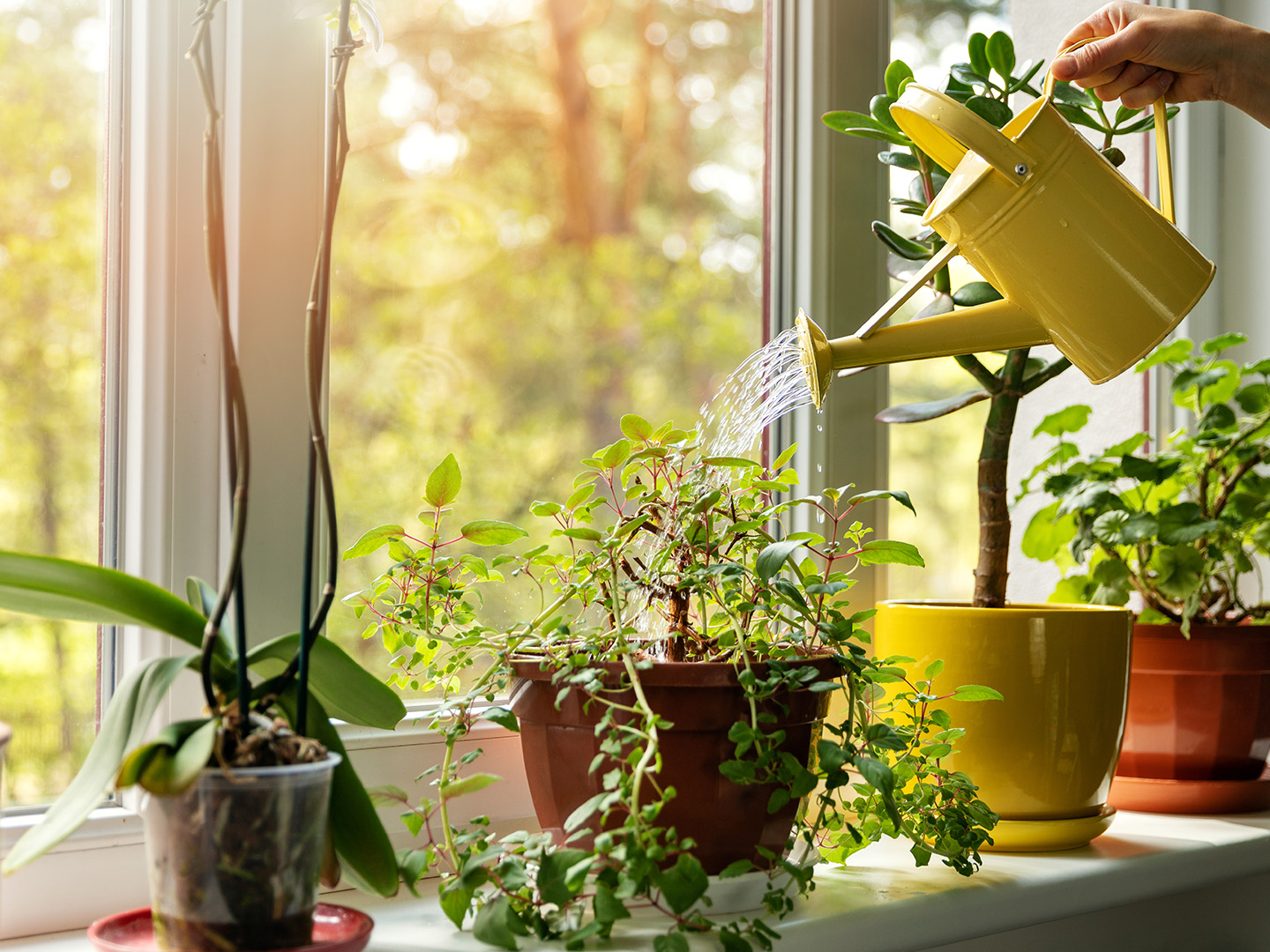
Watering
Using a thorough watering method can help flush any salt buildup or any other contaminants in the soil. Giving it a good watering can help saturate the soil and flush these contaminates out.
Another way to check if your plant need watering is to gauge the weight of your plant & pot. If your plant is lighter than normal, this indicates that it may be time to water. If it is still heavy from the previous watering, you can wait until the top few inches of soil dries out before its next watering.
Also due to plants becoming dormant during winter you will likely have to decrease the amount and frequency of your watering schedule.
Only water your plant when the soil dries out as excess water can cause root rot and fungal issues from the soil being damp for too long.
Acclimating to indoor environment slowly
A key component of bringing your plant indoors again is ensuring that this transfer does not happen too quickly. A sudden change of environment can put your plant into a state of shock which can cause it to wilt, drop leaves or even potentially die.
When the outdoor temperature begins to dip to below 12°C (55°F) you can start introducing your plants back indoors.
For the first few days, bring your plant and pot inside in the evening and move it back outside in the morning.
Progressively increase the amount of time that your plant spends indoors before fully bringing in indoors. This will reduce the shock of environmental change for your plant.
Following the above steps will help ensure that you have a successful transition of your plant back indoors for the fall and winter seasons!